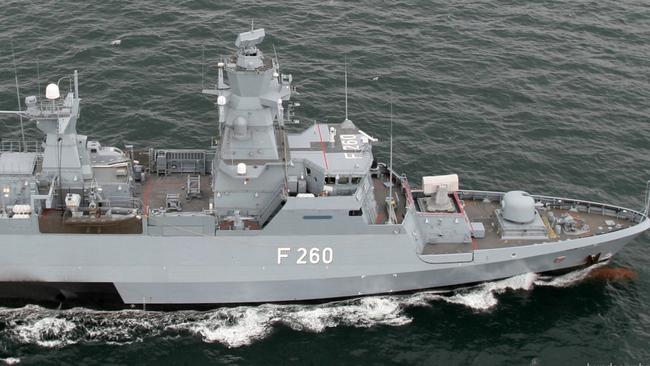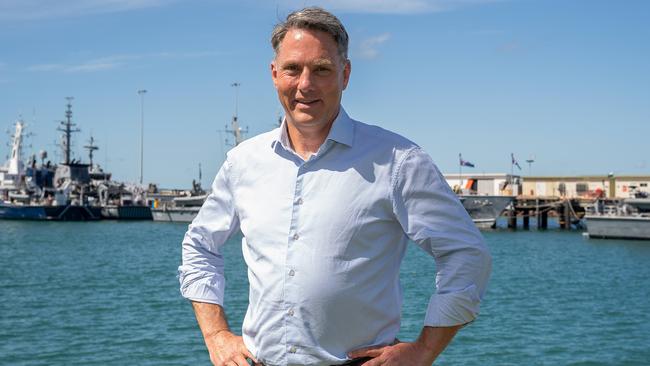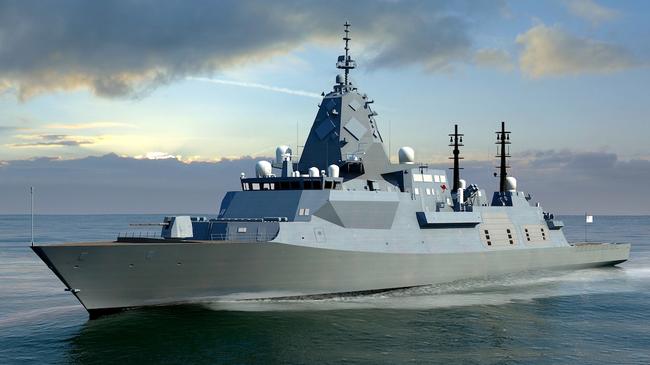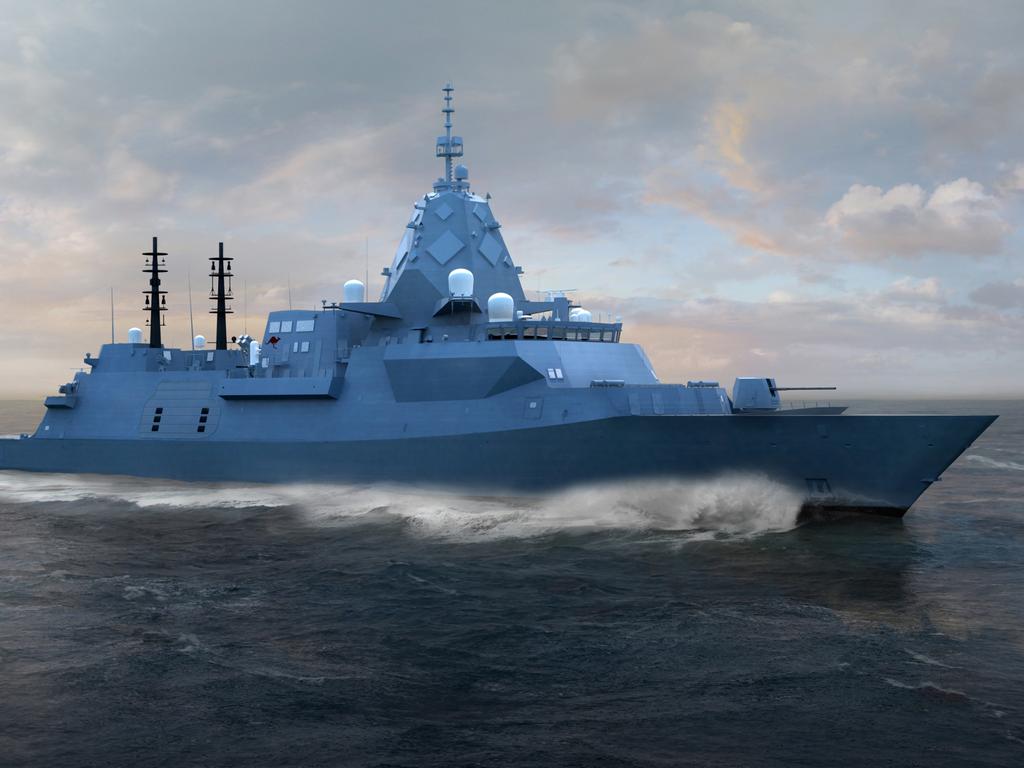Germany steps up bid to build Australia’s $5 billion fleet of corvettes for new-look navy
Germany has stepped up a bid to build a $5 billion fleet of navy corvettes for Australia, ahead of the government’s $50 billion review of the navy’s surface fleet.

Germany has stepped up a bid to build a $5bn fleet of navy corvettes for Australia, as global shipbuilding giants beat a path to Canberra to try to curry favour ahead of the government’s $50bn review of the navy’s surface fleet.
Peter Luerssen, the owner of Germany’s largest shipbuilder, will this week meet with Defence Minister Richard Marles and senior defence department officials in Canberra about a proposal to build up to 10 heavily armed corvettes for the navy in Australia.
Corvettes are a smaller warship which would fulfil the call in the recent Defence Strategic Review for the navy to comprise a mix of smaller Tier 2 warships alongside larger Tier 1 warships such as the three Hobart-class air warfare destroyers.
“We are building a 90m corvette which has the ability to carry a substantial weapon load and we will be in the position to respond to whatever needs the Australian government may have faster than any competitor,” Mr Luerssen told The Australian.
Mr Luerssen’s company, Naval Vessels Luerssen, is one of several global shipbuilding giants pushing to become key players in the new-look Australian navy, which the federal government is planning to unveil this year to meet the strategic threat posed by China.
At least three companies, Luerssen, another German shipbuilder TKMS and Spain’s Navantia are proposing to build corvettes for Australia, while British company Babcock is proposing a light frigate and Navantia is also proposing to build more air warfare destroyers.
Mr Marles will make a series of decisions collectively worth about $50bn in October about the future structure of the navy’s surface fleet which will complement the acquisition of nuclear-powered submarines.
The government’s decisions will be heavily influenced by the findings of an independent review into the future structure of the surface fleet, headed by retired US vice-admiral William Hilarides, which is due to report to the government by the end of September.

The DSR called for the navy to obtain “a larger number of smaller surface vessels” rather than rely so heavily on larger warships such as AWDs and frigates.
“This would significantly increase the navy’s capability through a greater number of lethal vessels with enhanced long-range strike,” it said.
But the government’s ability to buy smaller surface vessels has been jeopardised by Mr Marles’ inability to win a large funding increase for defence despite the DSR’s claim that Australia faces the most dangerous strategic outlook in a generation because of China’s fast-growing military might.
Experts believe the only way the government can afford to purchase corvettes this decade will be to cut the troubled $45bn project to build nine Hunter-class frigates in Adelaide.
The yet-be-built Hunter frigates have ballooned in cost, have suffered long delays, are overweight and poorly armed. Five years after they were announced, the first steel has only just been cut on the first boat.
A recent ANAO audit report presented a damning account of the numerous mistakes and problems which have haunted the project, in which the first ship will not be delivered until the early 2030s.
However, the politics of cancelling the Hunter frigates are fraught.

The Hunter-class, based on the British Type 26 frigate, is being built by British shipbuilder BAE.
Cancellation of the Hunter project – the largest naval shipbuilding project in Australia’s history – would anger Britain, just as cancelling the French submarine project enraged Paris.
“According to what we know from Senate estimates and the Audit Office report, the cost of nine Hunter-class frigates currently sits at around $50bn and rising, and will only get more expensive,” said Peter Dean, head of the defence program at the US Study Centre at the University of Sydney.
“So you could get between six and 10 corvettes for the price of a single Hunter-class frigate.
“You could get 10 corvettes with 16 (missile) cells in each, that’s 160 cells across those 10 boats. There are only 32 cells on one Hunter frigate so corvettes really give bang for the buck. With 10 of them, corvettes can also be in a lot more places at the same time.”
Mr Marles says he will consider the findings of the independent report before making final decisions on what the future shape of the fleet will be and which companies will be chosen to build them in Australia.








To join the conversation, please log in. Don't have an account? Register
Join the conversation, you are commenting as Logout